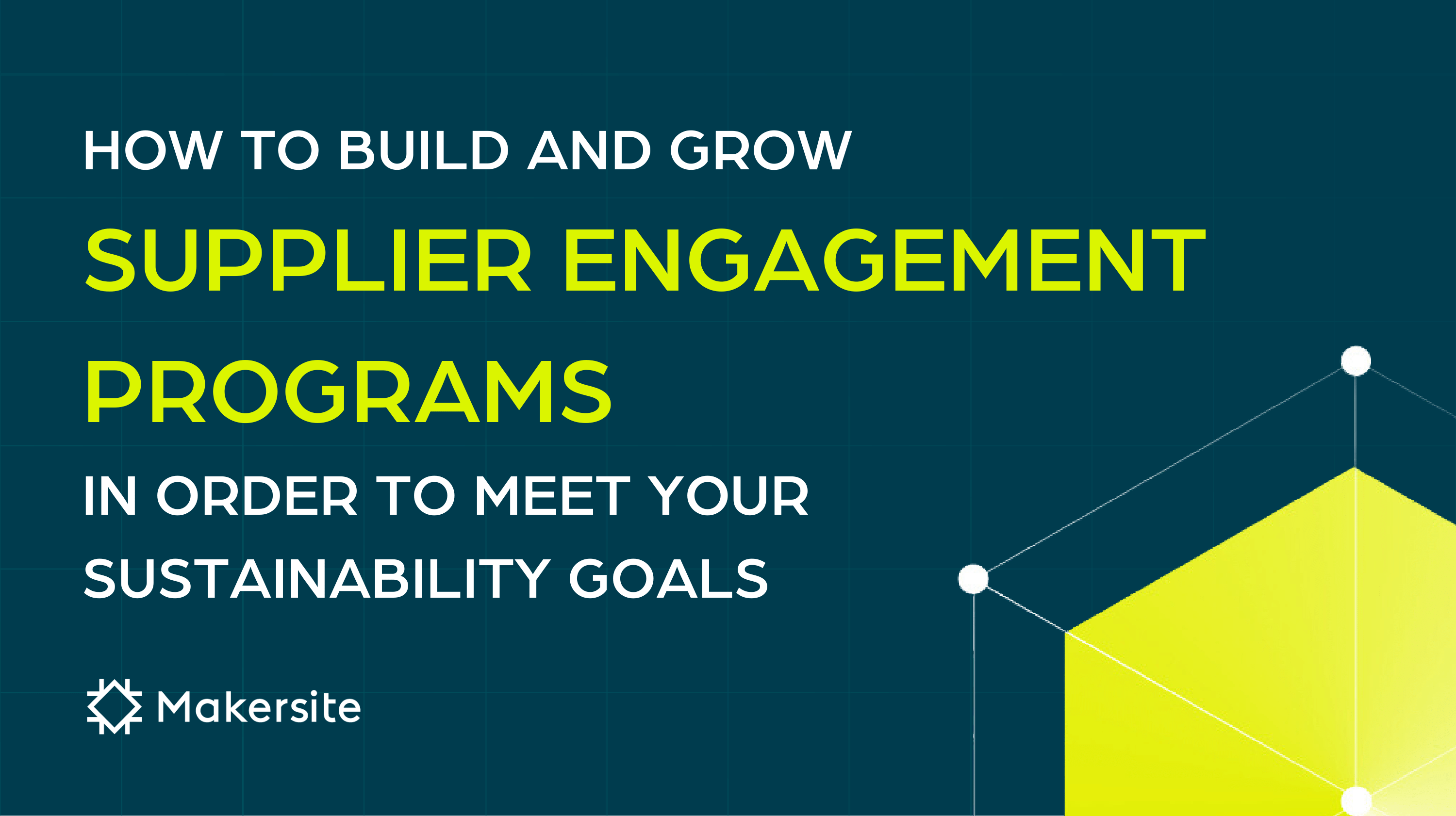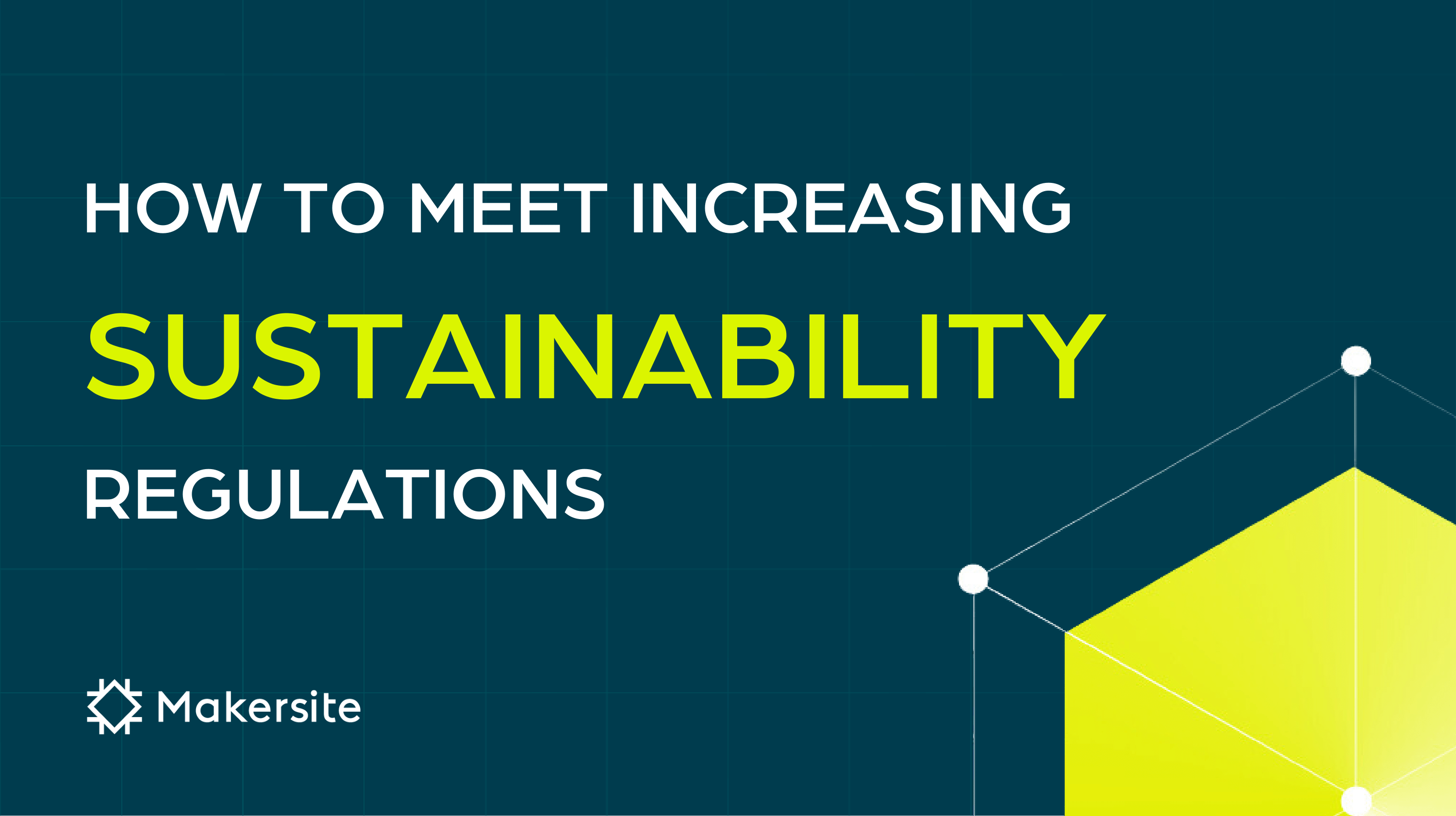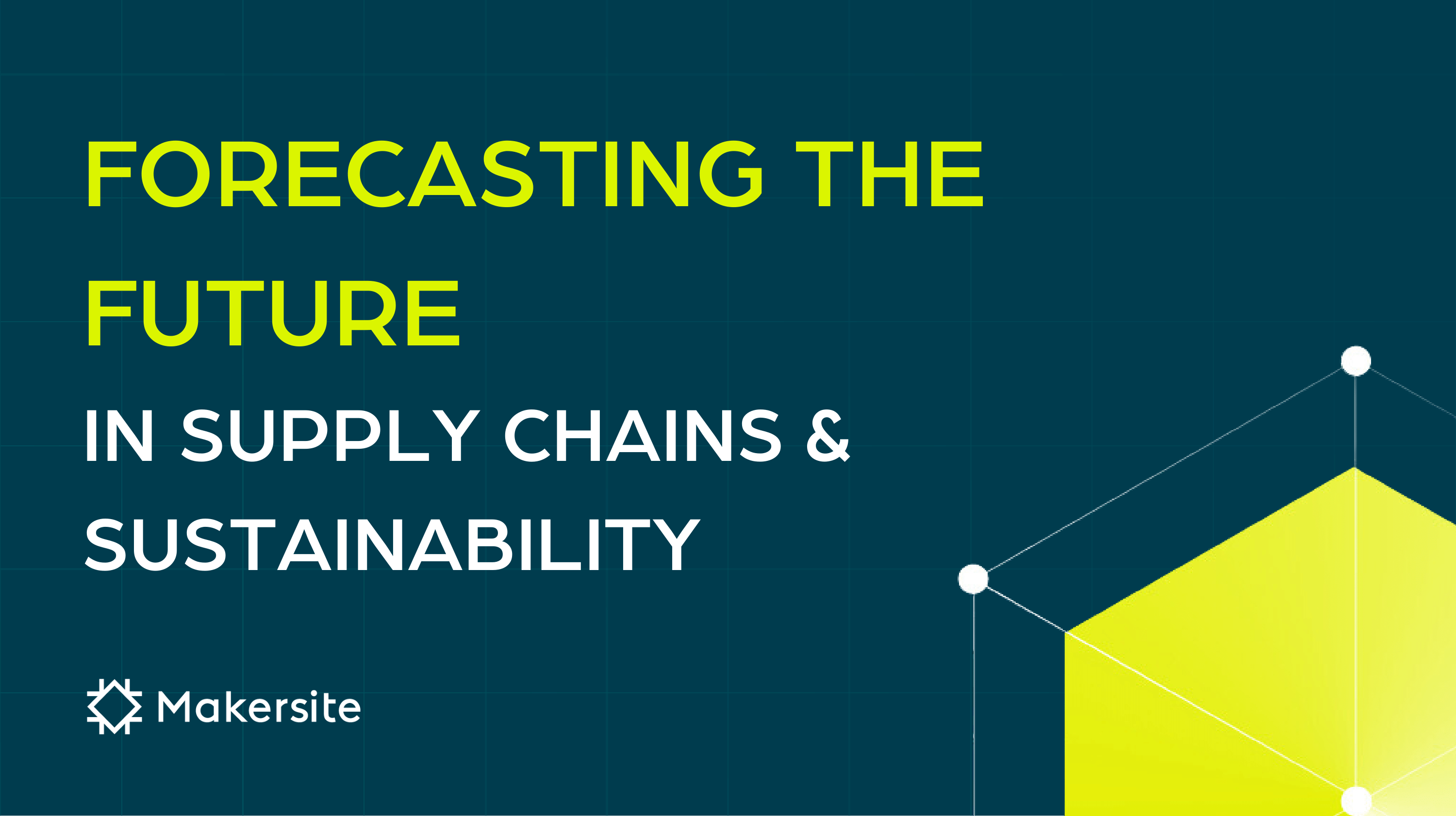In today’s business landscape, sustainability is no longer a buzzword — it’s a necessity. Companies are increasingly under pressure from consumers, investors, and regulatory bodies to adopt more sustainable practices. One critical solution to this is Life Cycle Assessment (LCA) software, a tool that transforms complex data into actionable insights, driving sustainable growth and operational efficiency. Let’s explore how LCA software addresses common pain points and empowers businesses to make informed, sustainable decisions.
Automating Life Cycle Assessments
One of the primary challenges companies face is the labor-intensive nature of conducting life cycle assessments. Manual LCA processes involve collecting data from various sources, analyzing it, and then interpreting the results — a time-consuming and often error-prone undertaking. LCA software (as seen in Makersite’s work with Microsoft), however, automates these processes, significantly reducing the workload, accelerating the data assessment process and enhancing accuracy by minimizing human error. This allows businesses to conduct LCAs more frequently and efficiently, ensuring that sustainability is able to remain a continuous, integrated part of their operations.
Example:
A consumer goods manufacturer can use LCA software to automate the assessment of thousands of products across different regions. This not only speeds up the process but also provides more reliable data for making strategic decisions on product design and material sourcing.
Enhancing Sustainability Reporting
Sustainability reporting is critical for transparency and compliance with an ever-growing slate of regulations. However, compiling comprehensive and accurate reports manually can be daunting. LCA software simplifies sustainability reporting by providing a centralized platform for data collection and analysis. The software can automatically generate reports that comply with various standards and frameworks, not only saving time but also ensuring that reports are accurate and consistent, bolstering both the company’s credibility and compliance.
Example:
A large retailer can use LCA software to streamline its annual sustainability report, ensuring that data from all departments is consistent and compliant with international standards. This has the added benefit of enhancing the retailer’s reputation among environmentally conscious consumers and investors.
Scaling Sustainable Business Practices
For businesses looking to scale their sustainability efforts, LCA software is indispensable. As companies grow, so do the complexities of their supply chains and operations. Manual approaches to LCA are almost impossible to scale accurately, often leading to fragmented and inconsistent sustainability practices. LCA software, on the other hand, provides a scalable solution that can handle large volumes of data across multiple sites and products. This scalability ensures that sustainability efforts are uniform across the organization, facilitating broader and more impactful environmental initiatives.
Example:
An automotive company can use LCA software to evaluate the environmental impact of its product lineup across multiple markets. This allows the company to implement standardized sustainability practices globally, ensuring that all operations contribute to the company’s overall environmental goals.
Making Sustainable Manufacturing More Efficient
Manufacturing is a resource-intensive process (research shows that approximately 80% of a product’s environmental impact is determined during the design phase), and making it sustainable is a significant challenge.
LCA software helps manufacturers identify inefficiencies and areas for improvement by providing detailed insights into the environmental impacts of their processes. By analyzing data on energy use, waste generation, and emissions, companies can implement targeted strategies to reduce their environmental footprint. This not only helps in achieving sustainability goals but also often results in cost savings through improved efficiency and resource management.
Example:
A packaging company can use LCA software to analyze the lifecycle of its products, identifying opportunities to reduce material waste and energy consumption in production. This leads to both cost savings and a reduced environmental footprint.
Overcoming the Limitations of Manual LCA
Manual life cycle assessments are fraught with limitations. They are time-consuming, prone to errors, and often lack the granularity needed for precise decision-making. Furthermore, different business units operating in siloes can lead to inconsistent data and fragmented sustainability efforts. LCA software addresses these issues by providing a unified platform for data integration and analysis. This ensures that all business units are aligned and working with the same accurate, up-to-date information. The result is a more cohesive and effective approach to sustainability.
Example:
A multinational corporation can use LCA software to integrate data from various departments, ensuring that sustainability metrics are consistent across all regions and product lines. This unified approach facilitates better strategic planning and resource allocation.
Assisting with Scope 3 Calculations
Scope 3 emissions, which include all indirect emissions that occur in the value chain of the reporting company, are notoriously difficult to measure and manage. Traditional methods of calculating these emissions are complex and often inaccurate due to the vast amount of data required. LCA software simplifies scope 3 calculations by automating data collection from suppliers and other value chain partners. This leads to more accurate and comprehensive assessments of a company’s total carbon footprint, enabling more effective strategies to reduce emissions.
Example:
A food and beverage company can use LCA software to track emissions across its supply chain, including agricultural practices, transportation, and packaging. This comprehensive view helps the company identify and target high-emission areas for improvement.
Addressing Issues with Manual Data Processing
Manually processing the vast amounts of data required for LCA is not only tedious but also increases the likelihood of errors. Data discrepancies, incomplete information, and the sheer volume of data can overwhelm sustainability teams. LCA software mitigates these issues by automating data processing, ensuring that data is accurate, complete, and consistent. This automation allows sustainability teams to focus on interpreting the data and making strategic decisions rather than getting sidelined by data entry and verification.
Example:
A technology company can use LCA software to automate the processing of data from its global supply chain, ensuring that all environmental impacts are accurately recorded and analyzed. This allows the company to quickly respond to sustainability challenges and opportunities.
Scaling Accurate and Granular Data
Accurate and granular data is crucial for effective sustainability initiatives. Without precise data, companies cannot accurately measure their environmental impacts or the effectiveness of their sustainability strategies. LCA software provides the tools needed to collect, process, and analyze detailed data on a large scale. This granularity enables companies to pinpoint specific areas for improvement and track the progress of their sustainability efforts with a high degree of accuracy.
Example:
A chemical company can use LCA software to gather detailed data on the environmental impacts of each stage of its product lifecycle, from raw material extraction to disposal. This level of detail enables the company to implement more precise and effective sustainability measures.


Common Problems Faced Without the Right LCA Software
Businesses that do not use the right LCA software often face a myriad of challenges. As discussed above, these include inefficient and error-prone manual processes, inconsistent data across different business units, difficulty in scaling sustainability efforts, and challenges in meeting regulatory compliance. Without LCA software, companies struggle to conduct comprehensive and accurate life cycle assessments, leading to missed opportunities for improvement and potential reputational damage.
Let’s recap the most common problems:
Inefficient Manual Processes
Manual LCA processes are labor-intensive and slow, often resulting in delays and increased costs. The time and resources required to collect and analyze data manually can be prohibitive, especially for large companies with complex supply chains.
Inconsistent Data
Different business units operating in siloes often lead to inconsistent data collection and reporting. This fragmentation hampers the ability to get a clear, unified view of the company’s overall environmental impact, making it difficult to implement cohesive sustainability strategies.
Difficulty in Scaling
As businesses grow, so do the complexities of their operations. Without the right LCA software, scaling sustainability efforts becomes challenging. Manual processes simply cannot keep up with the increased data volume and complexity, leading to inefficiencies and gaps in sustainability initiatives that will only increase and become harder to tackle effectively with time.
Regulatory Compliance Challenges
Meeting regulatory requirements for sustainability reporting is critical but can be difficult without the right tools. Manual processes increase the risk of errors and non-compliance, potentially resulting in fines and reputational damage. LCA software ensures that all data is accurately collected and reported, helping companies stay compliant with environmental regulations.
Missed Opportunities for Improvement
Without accurate and comprehensive data, companies may miss opportunities to improve their sustainability practices. LCA software provides the detailed insights needed to identify inefficiencies and areas for improvement, enabling more effective and impactful sustainability strategies.
Driving Growth Through Sustainable Practices
LCA software is not just a tool for compliance; it’s a strategic asset that drives growth through sustainable practices. By providing detailed insights into every aspect of the product lifecycle, LCA software helps businesses innovate and improve their products and processes. This leads to the development of more sustainable products that meet consumer demand and regulatory standards, opening new market opportunities and enhancing brand reputation.
Innovation and Product Development
LCA software enables companies to explore different materials and production methods, assessing their environmental impacts before implementation. This fosters innovation in product development, leading to more sustainable products that can attract eco-conscious consumers and differentiate the company in the market.
Market Differentiation
Companies that can demonstrate their commitment to sustainability through rigorous LCA practices can differentiate themselves in the marketplace. This not only attracts environmentally conscious consumers but also appeals to investors looking for responsible and future-oriented businesses.
Cost Savings and Efficiency
Sustainable practices often lead to cost savings through improved resource efficiency and waste reduction. LCA software helps identify these opportunities, ensuring that sustainability initiatives are also financially beneficial.
Regulatory and Compliance Benefits
Proactively managing sustainability through LCA software helps companies stay ahead of regulatory changes and avoid potential fines or sanctions. It also enhances the company’s reputation with regulators and stakeholders.
Conclusion
LCA software is a powerful tool that transforms data into actionable insights, driving sustainable growth and enhancing operational efficiency. By automating life cycle assessments, better facilitating sustainability reporting, and enabling the scaling of sustainable business practices, LCA software addresses many of the common pain points faced by companies today.
It makes sustainable manufacturing more efficient, assists with scope 3 calculations, and ensures accurate and granular data processing. In an era where sustainability is paramount, investing in the right LCA software is essential for businesses looking to thrive while minimizing their environmental impact.
The right LCA software not only simplifies and streamlines sustainability efforts but also provides a competitive edge by enabling companies to operate more efficiently and transparently. As the demand for sustainable practices continues to grow, leveraging LCA software will be crucial in helping businesses make informed decisions that benefit both the planet and their bottom line.






